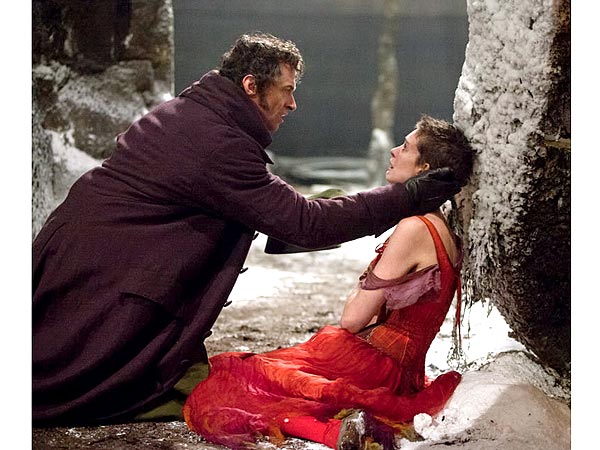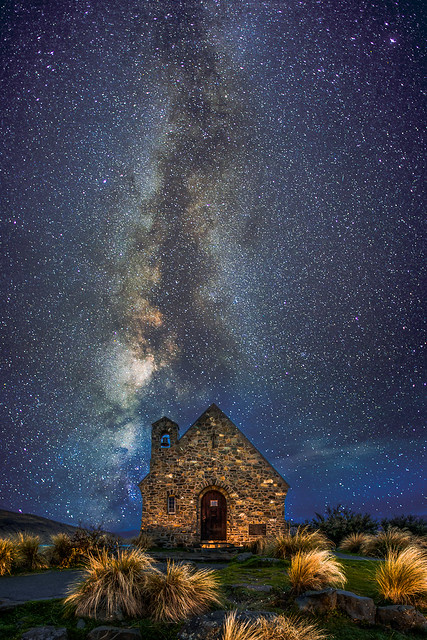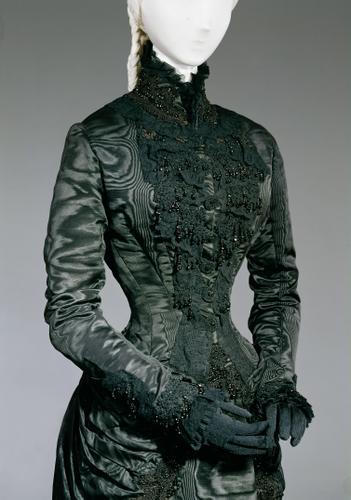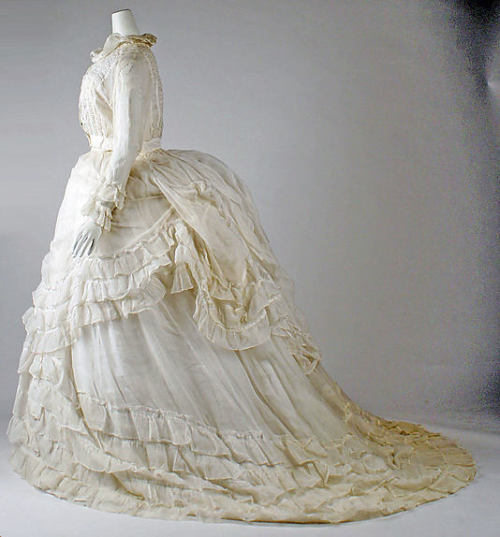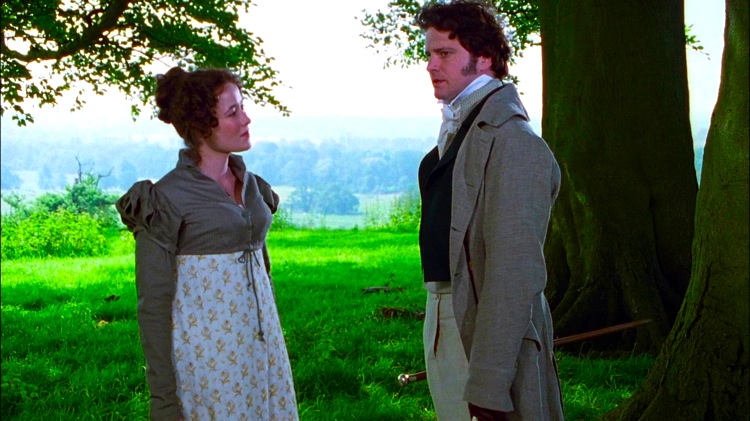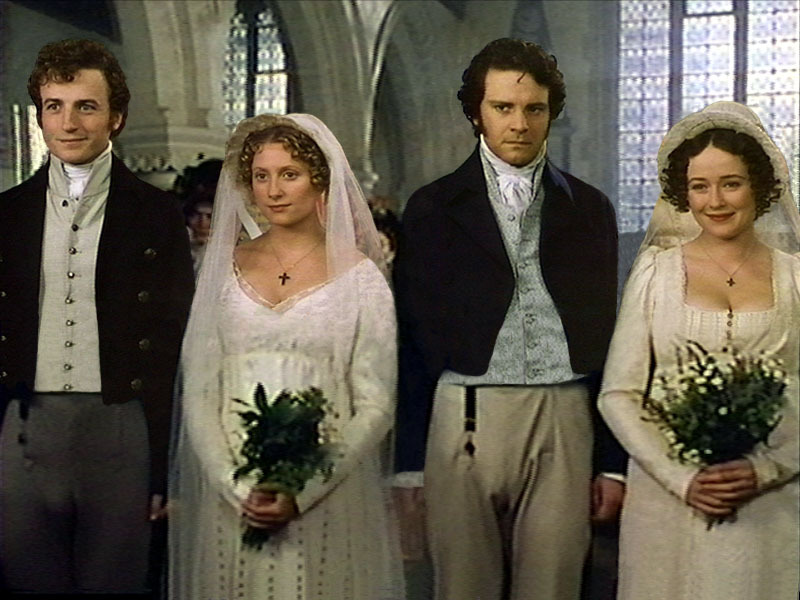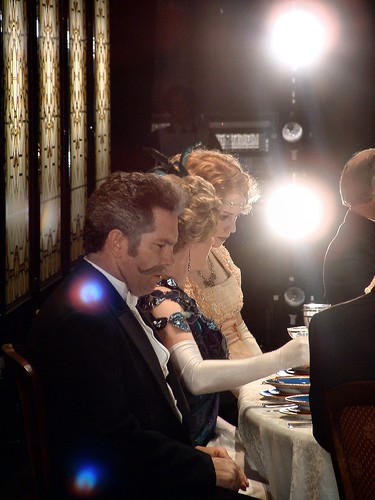Hey there! I hope you had a great Christmas and are enjoying the last day of 2012.
Being the theatre nerd that I am, I've been anticipating the film version of "Les Miserables" for months now. I finally saw it the day after Christmas and fell in love with it. It was a beautiful adaptation of both the musical and the book. It had wonderful music, poignant emotions, and of course, brilliant costumes. I knew as soon as I left the theater that I wanted to discuss them, so here we go.
For those of you who don't want spoilers for a 27 year old musical or a 150 year old book, turn back now!
In this post I'm going to cover the three main female characters: Fantine, Cosette, and Eponine. I know, I know, that means no Helena Bonham Carter. But honestly, I don't think
this will teach us anything about historical accuracy or character depth. Although I must admit that it is pretty fabulous.
Let's start with Fantine, shall we?
When we first meet Fantine, the year is 1821. The first outfit we see Fantine wearing is her factory uniform, a blue cap and smock.
Under her smock is a pink, empire waisted dress.
Though the empire waistline was declining in popularity by the 1820's (as seen on the dress on the far right), Fantine's dress is probably from an earlier year due to her poverty. I think the color contrast here is interesting. Fantine's pink really pops against the blue of every other factory worker. I think this was done intentionally to further set Fantine apart from her coworkers in this scene.
Another interesting thing to note as we continue looking at Fantine's costumes is that Anne Hathaway recently went completely vegan. That goes for her clothes as well. It's very interesting to see how the costume designer attempted to replicate period textiles without using any animal products. Most of her dresses look cotton to me, but I'm no textile whiz.
As you know, Fantine's fortunes soon take a turn for the worse, and she soon finds herself "at the bottom of the heap."
Sans hair, teeth, and dignity, Fantine appears to be wearing some sort of shift and corset combo. The fingerless gloves point to the ever present winter in the film, which had varying points of success at different parts of the movie. Here I think it works really well. This may be costume analysis overkill, but I think it's interesting how this dress is just a faded version of the same color palate we've seen her wear before: lots of pinks and purples, getting progressively more faded as her downward spiral continues. Here we see her color, or her vibrancy/hope/will to live/what have you almost completely faded away.
This next costume shows Fantine at rock bottom. It's obviously been a significant amount of time since her descent into prostitution (although evidently not enough time for her hair to grow back), because she's had a wardrobe change into this silky red number. Scarlet was (and still is, in some corners of the world) strongly associated with prostitution, so this color is appropriate for Fantine. The character might have even intentionally chose this color as an advertisement of her profession. One thing that I find interesting about this outfit is the shred of dingy, faded purple at her shoulder. I can't tell if this is what's left of her undergarments from before, but if it is, the symbolism is pretty strong. Fantine's wearing a color that's completely alien to her palate thus far, and only a shred of her own color remains. Again, costume analysis overkill, but the colors do subtly represent Fantine's situation (in my mind, at least).
The last costume we see Fantine wear is a lavender, just-a-little-lower-than-empire waisted dress with long sleeves.
Now, I'm reasonably certain that we've seen this dress on her before, but without another go at the film, I can't be 100% sure. We see glimpses of what appears to be the same dress in
promotional images, but I think until I can confirm that it shows up earlier, I'll just treat it like her "ghost" dress.
As you can see, there's not a whole lot to the dress other than the fact that it's lavender. And given the color analysis I've done on past costumes, that's pretty significant. Another interesting point is that her hair is still short. I've seen many stage productions opt to restore Fantine's hair to her in her heavenly form, but it might be a deliberate choice here to keep the hair short. Maybe it's to say that Fantine's hardship shouldn't be ignored or undone. Or maybe it's just because Anne Hathaway actually cut her hair and couldn't magically have it back for this scene.
Let's move on to Eponine.
Eponine's first costume for the film consists of a brown skirt (probably with a petticoat or two underneath, given the volume), some sort of green top, and a green scarf/shawl tucked into a thick belt. Compared with the
costume Samantha Barks wore when playing the role onstage (which is literally her
"boy" outfit with some pants and without the coat), this costume is very feminine. I really appreciate that choice to show off Eponine's femininity, rather than make her a rough-and-tumble foil for Cosette. Yes, Eponine's very tough, but she's still a girl.
That is, until she puts on a disguise and becomes a boy.
This is another great costume, especially when compared to
stage versions of the same transformation, in which Eponine simply puts on a coat, some pants, and a hat (without even tucking her hair in) and magically becomes a boy. This is a much more believable getup (which may be why Marius doesn't recognize her immediately like he does in the show). I like that the scarf and belt she's wearing appear to be the same pieces from before. The transformation from feminine to masculine is much more distinct here than it has been on stage, and I think the designer pulled it off very well.
Last, but certainly not least, we have Cosette, who certainly brings it in the fashion department.
This first dress worn by Cosette could be a subtle homage to the traditional black and white dress worn by Cosette onstage. While it's the definition of 1830's fabulous with huge puffed sleeves and tons of girly accessories, it's also significantly simpler than most dresses of that opulent decade. Crazy prints with fussy ribbon trims were all but mandatory in the 1830's, but Cosette only wears one printed dress (maybe two?) over the course of the film, and it's a subtle print at that.
I think this shows how
pure Cosette is, for lack of a better word. In the entire story, Cosette is the bright spot in a sea of darkness, untainted by the misery that surrounds her. And to some extent, her clothes are the same way. When the world around her is
going absolutely crazy, Cosette stays simple, sweet, and pure.
Another great costume worn by Cosette is her wedding gown.
Well, the first thing I notice about Cosette's dress is that it's white, even though "Les Miserables" is a pre-Victorian story. As I've
discussed before, this isn't a complete inaccuracy, and it shows the innocence and the purity of the character well. I'm very puzzled by the panel on the front of the dress. I don't remember it from seeing the film, and I certainly don't think the designer would do this, but in the lighting of this photograph, it looks sheer. I'm not entirely sure what it is in reality, but if there's something that does
not show the innocence and purity of the character, that would be it. Another interesting thing here is that this is the only time we see Cosette with her hair up. I think this shows her coming of age in a way, her passage from childhood to womanhood.
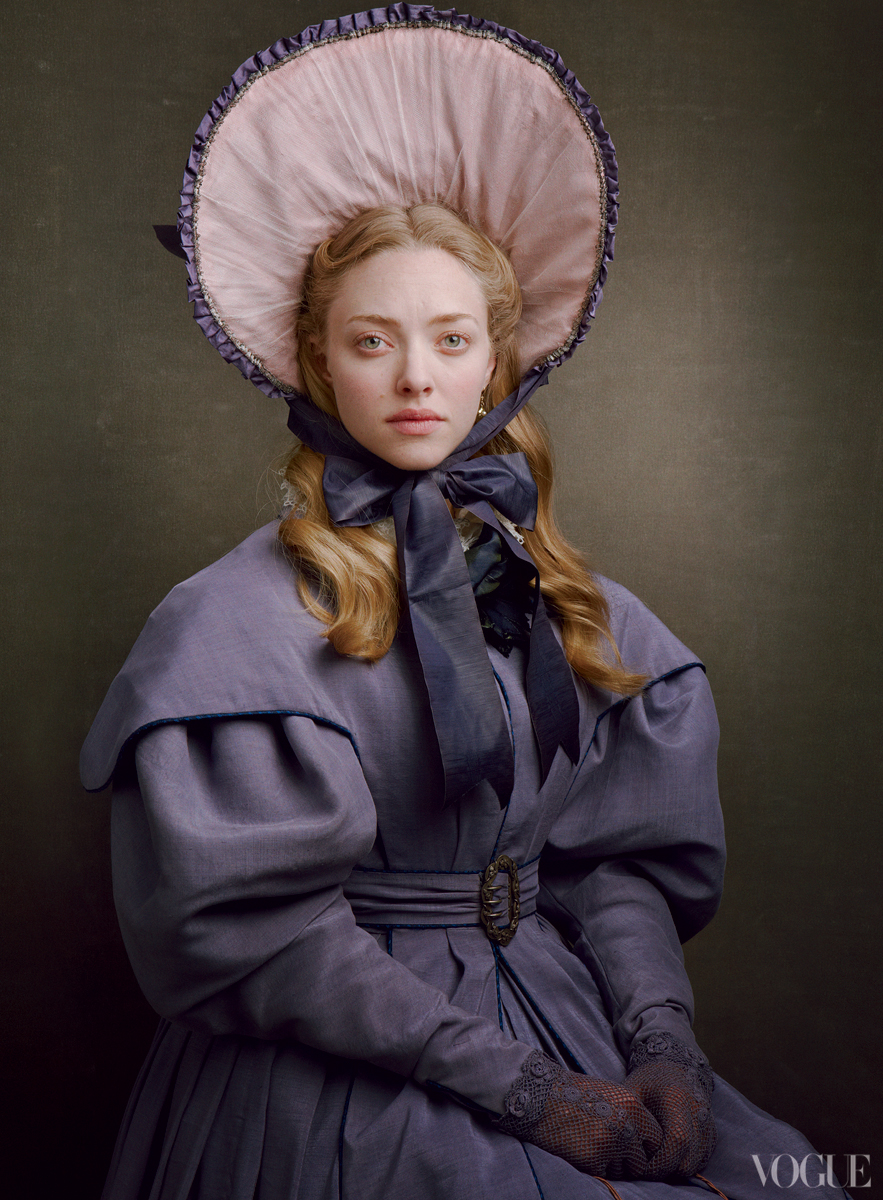 |
| Source |
Well, that wraps up my costume analysis of "Les Miserables." I really,
really enjoyed the film, and I heartily recommend it whether you're a long time fan of the musical and/or book, or you're just looking for a way to spend three hours and shed several million tears.
Huge props to Paco Delgado, the costume designer for the film.




